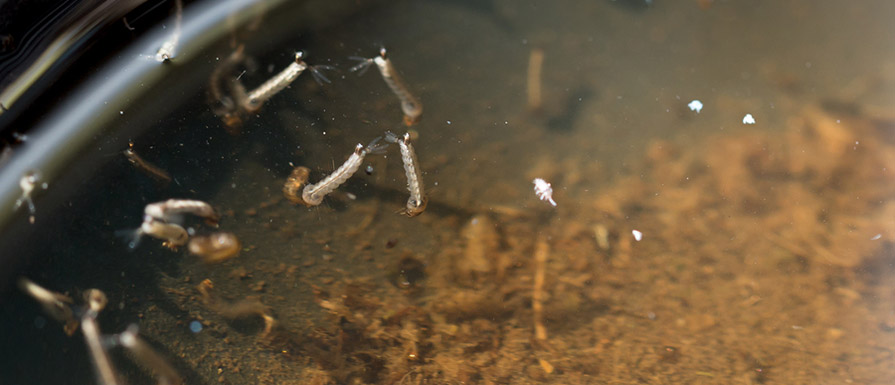Mosquitoes and Weather

Source: frank600/Bigstock.com
There are two main weather phenomena that are directly related to the development of mosquitoes: rainfall and temperatures.
Rainfall. Any stagnant water has the potential to become a mosquito breeding ground. Lakes, ponds, slow flowing rivers and streams, marshes and swamps are some of the naturally occurring areas where mosquitoes gather to breed. But rain can collect in man-made containers, such as pools, bird baths, pet bowls, or buckets, causing artificial areas for mosquitoes to reproduce. After big storms or flooding events, there is a typical rise the local mosquito population, with the increase in stagnant water available.
Temperature. Mosquitoes hibernate, are cold-blooded, and prefer temperatures over 80 degrees. At temperatures less than 50 degrees, they shut down for the winter. The adult females of some species find holes where they wait for warmer weather, while others lay their eggs in freezing water and die. The eggs keep until the temperatures rise, and they can hatch. Warm nighttime temperatures allow mosquitoes to thrive, however if it becomes too hot, the mosquitoes become less active.